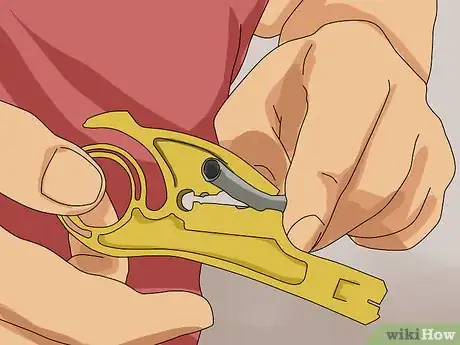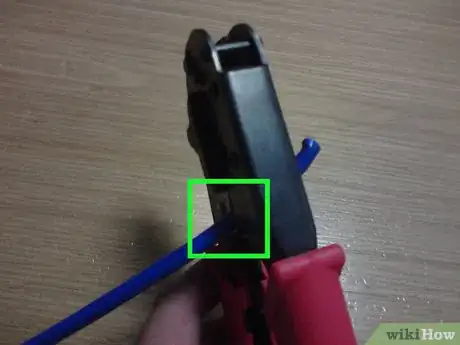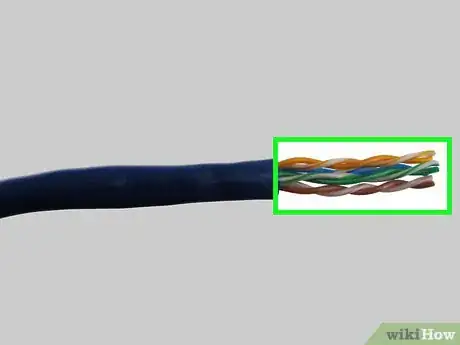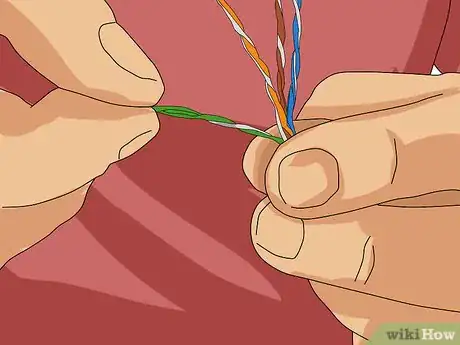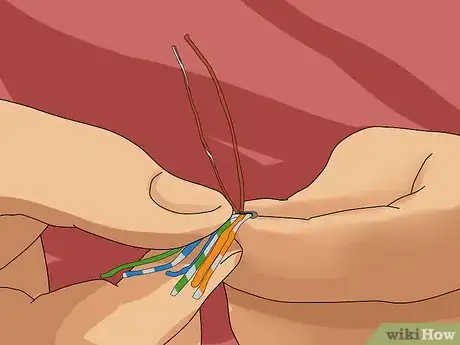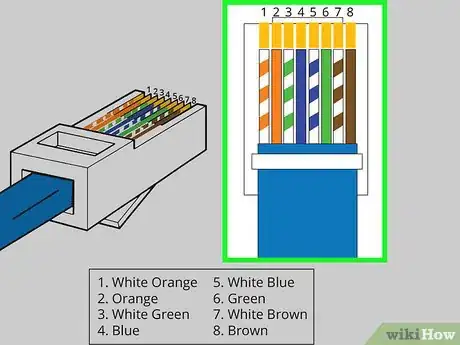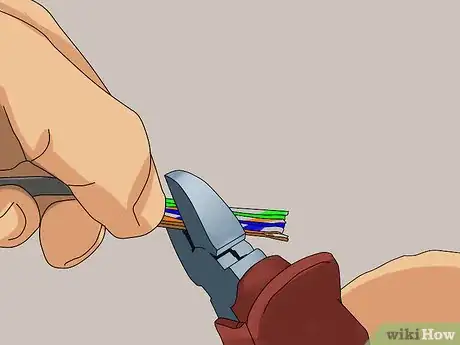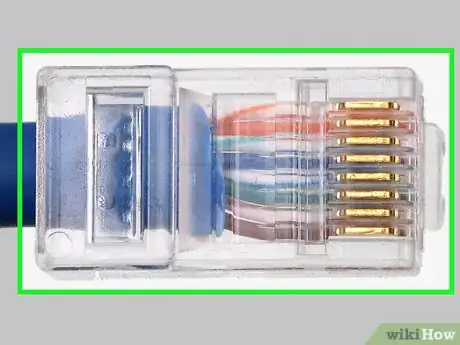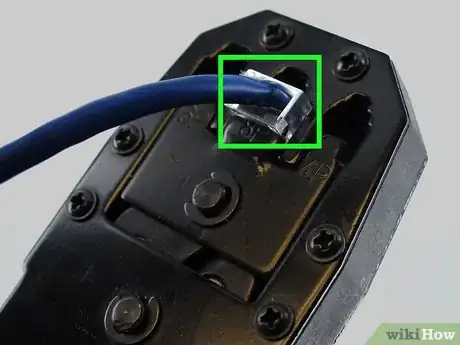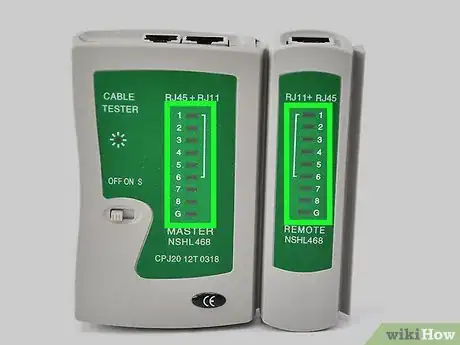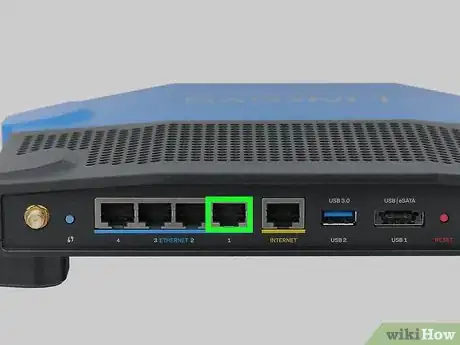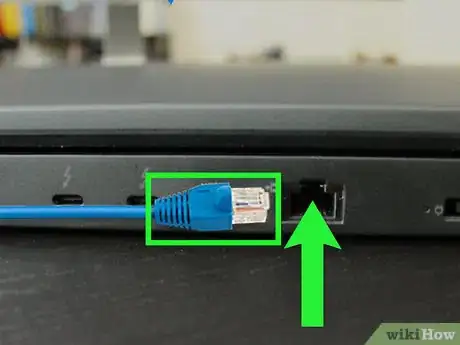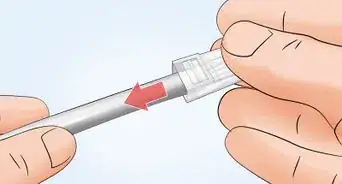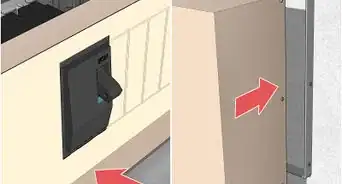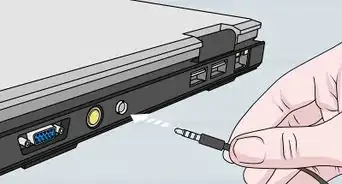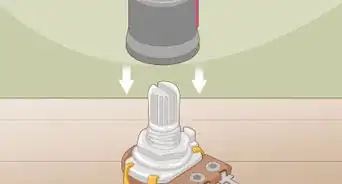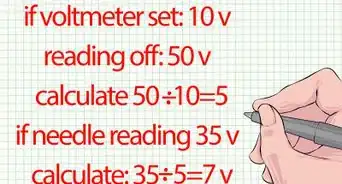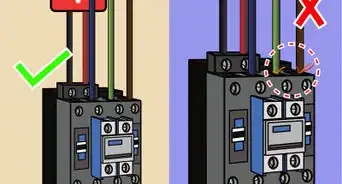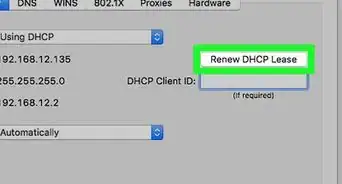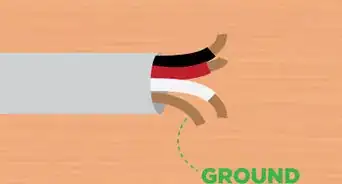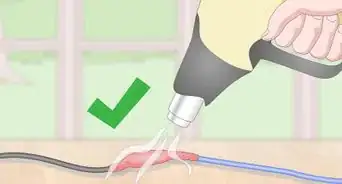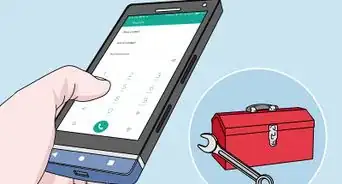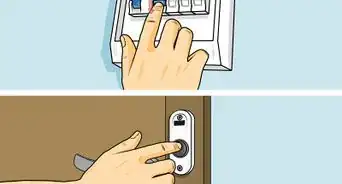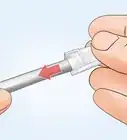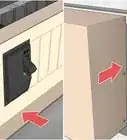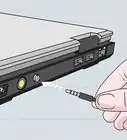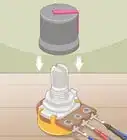This article was co-authored by Ricardo Mitchell. Ricardo Mitchell is the CEO of CN Coterie, a fully licensed and insured Lead EPA (Environmental Protection Agency) Certified construction company located in Manhattan, New York. CN Coterie specializes in full home renovation, electrical, plumbing, carpentry, cabinetry, furniture restoration, OATH/ECB (Office of Administrative Trials and Hearings/Environmental Control Board) violations removal, and DOB (Department of Buildings) violations removal. Ricardo has over 10 years of electrical and construction experience and his partners have over 30 years of relevant experience.
This article has been viewed 12,923 times.
The RJ-45 connector is most commonly known for its use in ethernet networking. It’s similar to a telephone jack, but it is wider. Most connectors are described through their prongs that attach to port; this is what differentiates the cables from one another. In RJ-45, the “RJ” stands for “registered jack”, while the “45” stands for the “number of interface standard”.
Steps
Stripping the Protective Casing
-
1Adjust the dial of the wire stripper. Twist the dial until it can cut into your cable without damaging the wires inside.
- Make sure that it is the right dial to match the size of your cable.
-
2Insert the wire into the notch. Stick the wire into the notch of the wire stripper and gently squeeze the stripper, so it can cut through the rubber cushioning/insulation.
- Check to see if the length of the cable is not too short or too long as your inserting it into the notch.
Advertisement -
3Cut through the insulation. Spin the wire stripper around the wire once it cuts the rubber insulation to make sure that the insulation is cut all the way through.
- Double check to make sure that the inner wires are not damaged, to prevent issues from occurring as you continue!
Exposing and Organizing the Wires
-
1Pull off the cut insulation so that the inner wires are exposed.
-
2Untwist the wires. Make it so the colored wires are separated from each other.
-
3Organize the wires.
- The wires should be organized using the straight through method.
- Both T-568A and T-569B will work, so pick one of the patterns and apply it to both sides of the cable.
-
4Check the length. Line up the wiring with connectors to see if the length is good.
-
5Cut the excess if the length is longer than needed.
Connecting Everything Together
-
1Insert the wires in the connector. Slide the wires inside the connector so that it is all the way though.
-
2Crimp the connector. Use the crimping tool by squeezing the connector relatively hard to secure the wires inside the connector.
-
3Double check that all the wires are in the correct order
-
4Use the crimper on cables. Be careful because after this point you can not redo anything
-
5Test the cables. Test the cables by inserting it into a cable tester or the back end of a router.
-
6Plug in the cables for use!
Warnings
- If it is plugged into the correct port and is still not working, you must restart the process of making your cable with a new connector.⧼thumbs_response⧽
Things You'll Need
- Crimper (Note: some crimpers come with a wire cutter)
- RJ-45 connector
- Ethernet Strippers
- Cable tester (optional)
- Cabling: Choose from Cat5, Cat5e (most common), Cat6, Cat6a, Cat7 (When deciding on what cable you are looking for, you should keep two things in mind: speed and cost.)
